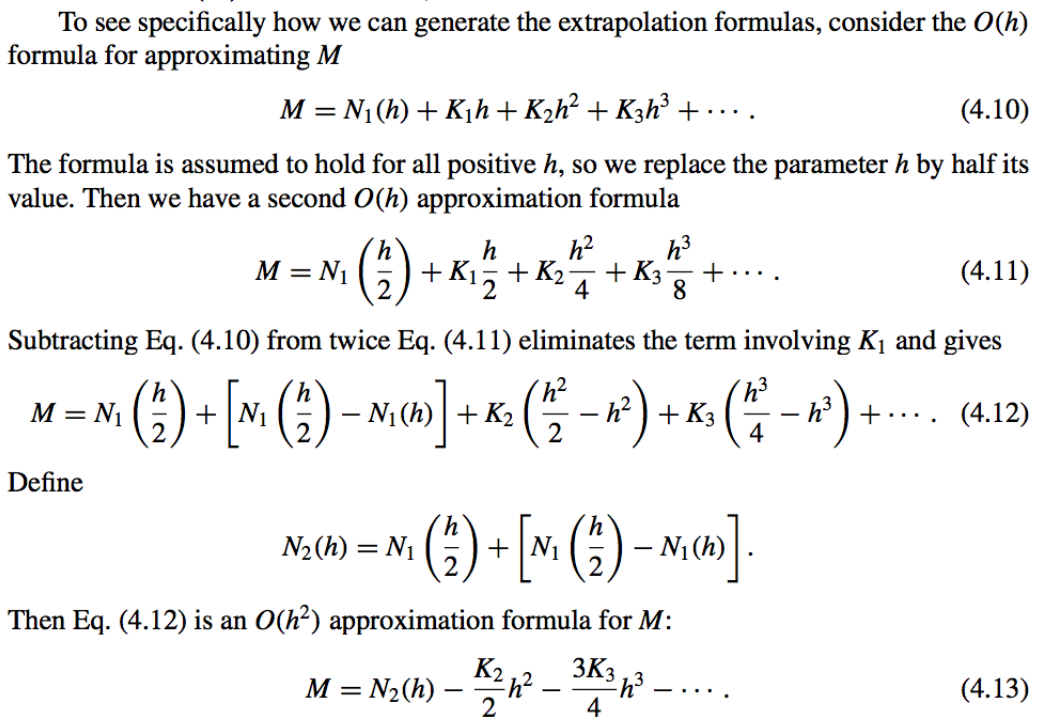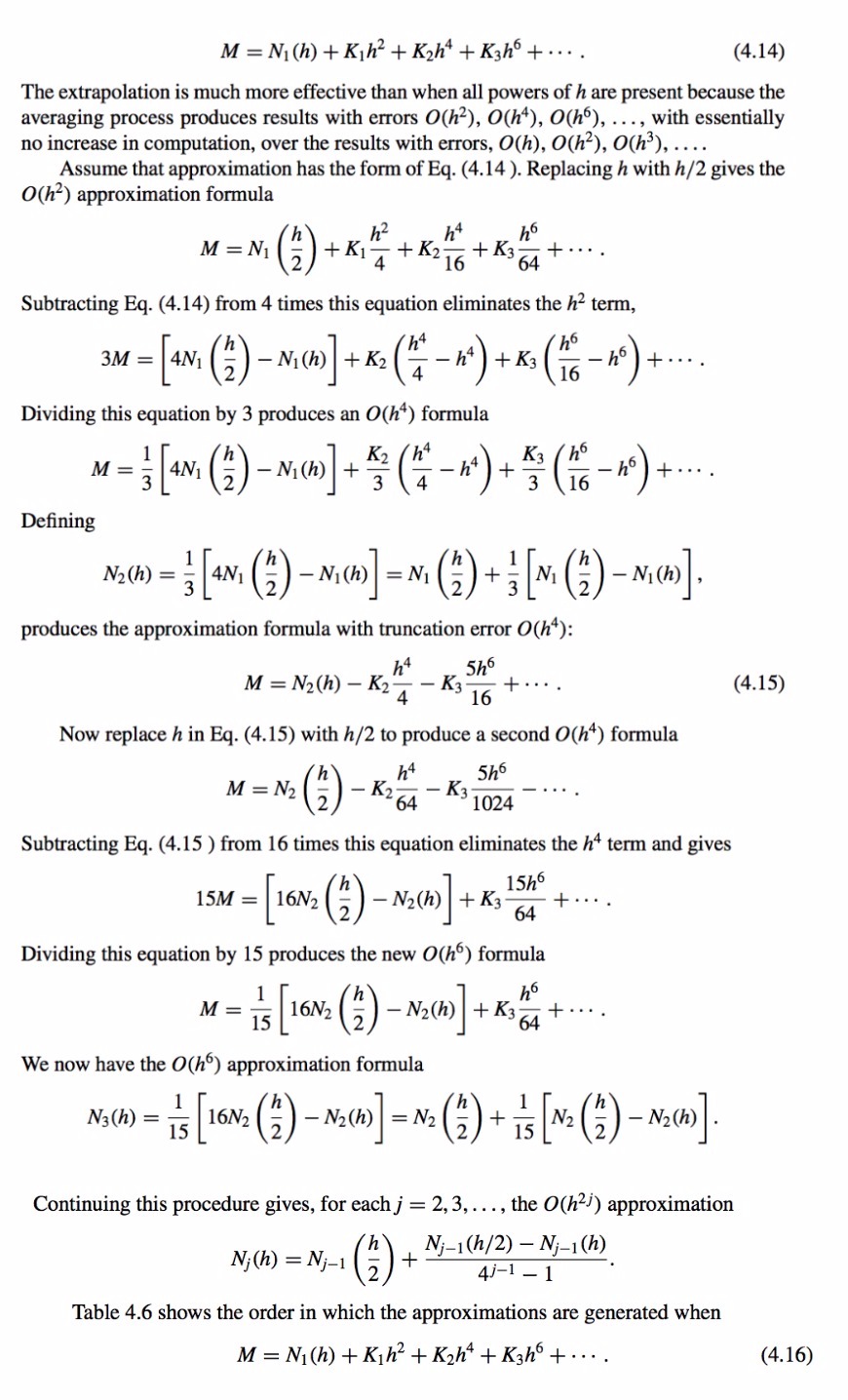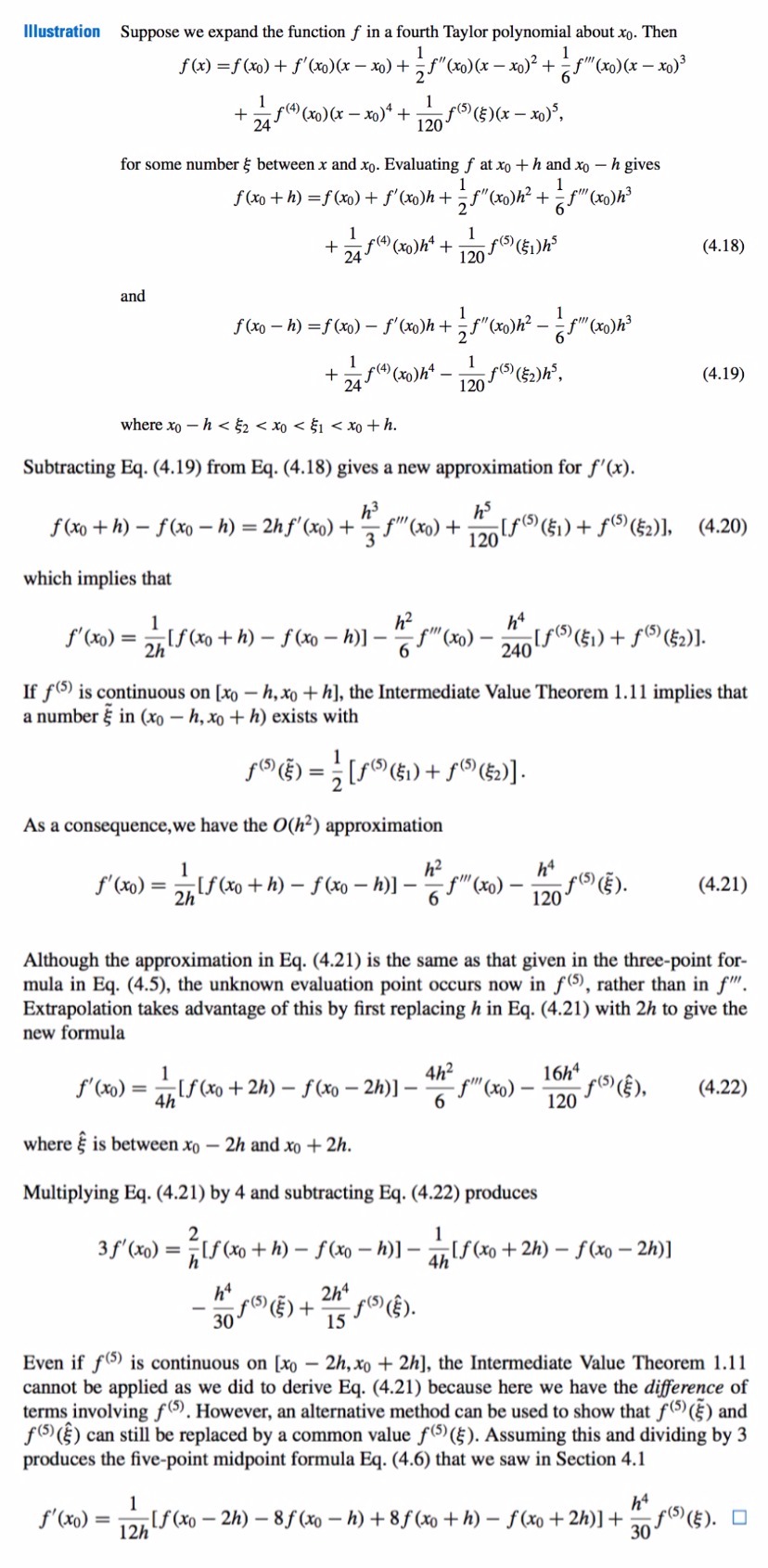Extrapolation
- What?
- Extrapolation that is used to generate high-accuracy results while using low-order formulas.
- Extrapolation can be applied whenever it is known that an approximation technique has an error term with a predictable form, one that depends on a parameter, usually the step size \(h\).
- Suppose that for each number \(h \neq 0\) we have a formula \(N_1(h)\) that approximates an
unknown constant \(M\), and that the truncation error involved with the approximation has the
form,
\(M − N_1(h) = K_1h + K_2h^2 + K_3h^3 +··· ,\)
for some collection of (unknown) constants \(K_1, K_2, K_3, ...\) . - The truncation error is \(O(h)\), so unless there was a large variation in magnitude among the constants \(K_1, K_2, K_3, ... ,\)
\(\ \ \ \ \ \ \ \ \ \ \ \ \ \ \ \ \ \ \ \ \ \ \ \ M − N_1(0.1) \approx 0.1K_1,\ \ \ \ \ \ \ \ M − N_1(0.01) \approx 0.01K_1,\)
and, in general,
\(\ \ \ \ \ \ \ \ \ \ \ \ \ \ \ \ \ \ \ \ \ \ \ \ M − N_1(h) \approx K_1h\) . - The object of extrapolation is to find an easy way to combine these rather inaccurate \(O(h)\) approximations in an appropriate way to produce formulas with a higher-order truncation error.
- Why?
- We can combine the \(N_1(h)\) formulas to produce an \(\mathcal{O}(h^2)\)
approximation formula, \(N_2(h)\), for \(M\) with
\(M − N_2(h) = \hat{K}_2h^2 + \hat{K}_3h^3 +···\) ,
for some, again unknown, collection of constants \(\hat{K}_2, \hat{K}_3, ...\).
Then we would have
\(M − N_2(0.1) \approx 0.01\hat{K}_2, M − N_2(0.01) \approx 0.0001\hat{K}_2,\) - If the constants \(K_1\) and \(\hat{K}_2\) are roughly of the same magnitude, then the \(N_2(h)\) approximations would be much better than the corresponding \(N_1(h)\) approximations.
- We can combine the \(N_1(h)\) formulas to produce an \(\mathcal{O}(h^2)\)
approximation formula, \(N_2(h)\), for \(M\) with
- The \(\mathcal{O}(h)\) formula for approximating \(M\):
The First Formula:

The Second Formula:

-
The \(\mathcal{O}(h^2)\) approximation formula for M:


- When to apply Extrapolation?
Extrapolation can be applied whenever the truncation error for a formula has the form:

for a collection of constants \(K_j\) and when \(\alpha_1 < \alpha_2 < \alpha_3 < ··· < \alpha_m\).
The extrapolation is much more effective than when all powers of \(h\) are present because the averaging process produces results with errors \(\mathcal{O}(h^2), \mathcal{O}(h^4), \mathcal{O}(h^6), ...\), with essentially no increase in computation, over the results with errors, \(\mathcal{O}(h), \mathcal{O}(h^2), \mathcal{O}(h^3), ...\) .
- The \(\mathcal{O}(h^4)\) formula for approximating \(M\):

- The \(\mathcal{O}(h^6)\) formula for approximating \(M\):

-
The \(\mathcal{O}(h^{2j})\) formula for approximating \(M\):


- The Order the Approximations Generated:

It is conservatively assumed that the true result is accurate at least to within the agreement of the bottom two results in the diagonal, in this case, to within
\(|N_3(h) − N_4(h)|\).
Deriving n-point Formulas with Extrapolation
- Deriving Five-point Formula:
